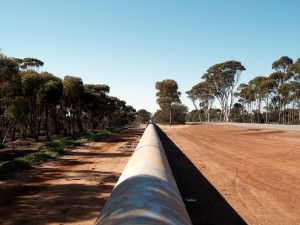Where does Canada Stand for the Energy Renaissance?
The TransCanada Energy East pipeline will greatly influence both Canadian and foreign geopolitics, but are the environmental risks worth it?
By: Ken Cates, Staff Writer
If Canada wants to grow beyond its well-known associations with maple syrup or the ever-lingering Brian Adams, the construction of the Energy East pipeline could be the key.
This development would put Canada ‘on the map’ by furthering its exportation potential and reshaping the global energy sector.
However, Canadians at large don’t seem to be aware of the geopolitical shifts occurring in their country.
Despite opposition by environmentalists and political uncertainty in the US over the Keystone XL pipeline, TransCanada Corp. has announced it plans to carry on with the construction of its Energy East pipeline in the beginning of the month.
At 2700 miles in length and $1200 billion in cost, the pipeline has the capacity to carry 1.1 million barrels per day (bpd) from West Canada to New Brunswick and to the new deepwater oil terminals in the Atlantic for exports.
Where New Brunswick Premier David Alward coined the project as a “nation builder,” the planned pipeline is also a strategic bid to open up new export routes for Canadian energy producers. This will bring about a greater diversity in the markets as opposed to the dominant oil-glutted U.S. Midwest.
This will also increase potentials regarding domestic natural gas, where analyst Sandy Fielden of consulting firm RBN Energy in Austin, Texas notes, “It also solves two problems for the company as they have this large natural gas pipeline that has been made largely redundant.”
Most of the pipeline will run along an existing TransCanada gas line, with new construction in Alberta and in Quebec and eastern Canada.
To give you an idea of its length, 2700 miles is the distance from Beverly Hills to New York. Or from an international standpoint, starting from London the pipeline would stretch to Tehran. While the size alone indicates how big of a deal the pipeline is for Canada, in truth the effect and the reactions within Canada are but a tip of the geopolitical iceberg.
In the United States, the dynamic of energy is drastically changing. Indeed, Quebec premier Stéphane Marion argues, “Looking ahead, one should not forget that the energy revolution that is taking place in the U.S. has greatly reduced that country’s dependence on oil from the Middle East.” He also adds in a research note, “Under these circumstances, we cannot help but wonder about the impact of a diminishing role for the U.S. in that region of the world.”

Image courtesy of andrewcparnell via Flickr
The influence of Islamists on North America could also change with the shift in energy dynamics. With an alternative source of crude oil, the possibility of the US reducing its military spending in the Middle East has suddenly become an economically feasible option.
The US government’s reliance on the Gulf States such as Saudi Arabia could become something of the past.
In 2012, Canada imported $30-billion worth of oil, half of it from OPEC countries, making it the second-largest total on record.
If the Energy East plan comes to bear fruit, scheduled for 2017 in Quebec and 2018 in St. John, Canadian crude can fully replace the imports from Africa and Latin America, and could be exported as far as India. John Auers, senior vice president at refinery specialist Turner, Mason & Co. in Dallas, claims that it could one day is possible for Canadian crude to compete with Middle Eastern producers for market share in the Indian subcontinent.
Therefore, the Energy East pipeline has become a major player in North America’s adjustment to its ‘energy renaissance.’
While the project attracted far less critics than Keystone XL, resistances by environmental and First Nation groups continue to persist. Groups such as Greenpeace Canada argue for the need to invest in clean energy rather than expanding on tar sands and warn about its entailing risk to the environment and the locals.
Quebec, with the carnage of Lac Megantic still fresh in mind, has yet to take a stand on the issue. Port officials in Quebec City and Montreal worry about western crude displacing seaborne imports, though TransCanada still works closely with the Quebec government.
Whatever course Canada takes, change in the status quo seems inevitable. At least on this issue, I hope Canadians would bless itself with an informed decision.
Ken Cates has studied international relations at the University of Toronto, while currently pursuing a career in writing as well as a certificate in freelance writing. Inspired by writers such as Christopher Hitchens and Chris Hedges, Ken blogs about religion, politics, ethics, societies, and on the little bits of irony surrounding our daily lives.
Blog: http://beuncomfortable.wordpress.com/
Twitter: https://twitter.com/dinowithsaddleK
Sources
- TransCanada’s East Coast oil pipeline to change trade dynamics
- West-east pipeline debate must look to Middle East, economist says
- TransCanada to push ahead with major new oil pipeline to Eastern Canada
- TransCanada ramps up East Coast pipeline as Keystone stalls
- Photos courtesy of jeffk, andrewcparnell,































Share the post "Where does Canada Stand for the Energy Renaissance?"